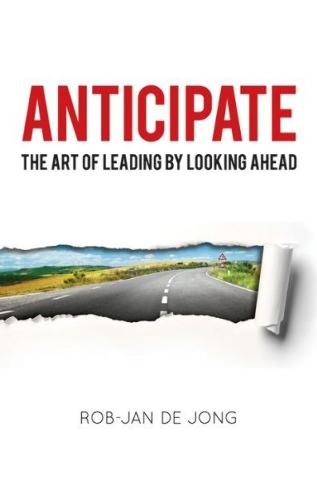
“Anticipate – The Art Of Leading by Looking Ahead” by Rob-Jan DeJong, (AMACOM, $27.95).
Leaders without vision are caretakers. Leaders with vision are movers and shakers.
De Jong’s exercises in Vision 101 focus on the path forward by framing actions around the answers to questions you need to ask today about tomorrow. His 20-plus questions shouldn’t be answered until you finished stretching your imagination and challenging the status quo by adopting his eight mindset-changing practices:
1. “Yes, and… versus Yes, but…” Using and in your response creates a how-and-why dialogue. It opens the door to new ideas and perspectives. But means no; it blocks the conversation from becoming all it could be.
2. “Break the pattern.” Everyone has a daily routine that engages autopilot thinking. Changing that routine will make you a bit uncomfortable at first. Over a few weeks, you’ll find that you’re seeing things differently. As you become comfortable with the new routine, change it; you need to stay uncomfortable.
3. “Powerful questions.” There are pointed questions and leading questions. Pointed ones get people thinking; leading questions generate the responses you expect. When formulating questions, “keep three dimensions in mind: 1. Why, what, how constructions, 2. scope, and 3. underlying assumptions.” You always want people to explore possibilities.
4. “Appreciative inquiry.” By discovering what’s going well, and the why behind it, you can share the information with others who might be able to use it to produce better outcomes and minimize problems. Ditto when something goes awry. Appreciative inquiry creates a collaborative environment.
5. “Radical exposure.” When you limit interaction to the usual suspects, you will get congruent thinking. Make a “deliberate effort to engage, with some frequency, with a subgroup that is profoundly different.” Getting outside your box is as easy as joining various LinkedIn groups, or using the Flipboard app to develop a broad reading list.
6. “Unblind your blind spot.” When it comes to decisions, what’s on the table is rarely the only possibility. Rather, it’s a comfortable option that developed via group think. Asking, “What are we not seeing or saying?” prompts a discussion about the amount and quality of the homework done. It’s also useful in detecting the “various biases that might prevent you from seeing the full picture.”
7. “Learn to listen.” We’ve all heard about the benefits of active listening, but we often lapse into mindless listening. DeJong believes asking open-ended questions can put you in listening mode.
Keep asking questions; resist the temptation to respond. “Don’t dismiss anything your conversation partner mentions, no matter how odd it sounds or how disconnected the person’s views are from yours.” Why not? You’re looking for other perspectives that challenge your assumptions; once challenged, you need to do some homework.
8. “Opinion swap.” What would happen if you had to defend a position that’s the polar opposite of your beliefs? You’d have to reexamine your thinking. Put this in practice by having a conversation with someone whose views differ from yours. It’s highly likely the conversation will teach you something about your opinions.
The book is filled with QR codes which link to content information. A QR reader app on a smartphone stores the information in its history file making your smartphone a pocket-sized reference guide. You’ll also find the stories of many leaders who used vision to fuel growth – personally, collegially and organizationally.
Jim Pawlak is a nationally syndicated reviewer of business books.







